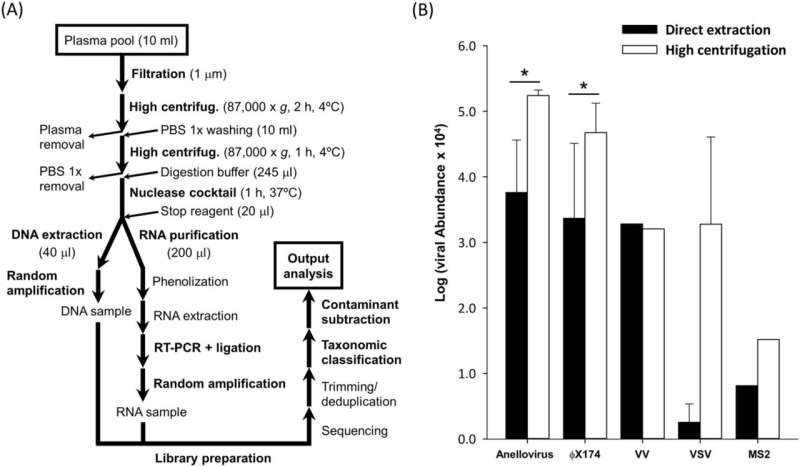
The Institute for Integrative Systems Biology (I2SysBio), a joint center of the University of Valencia and the Spanish National Research Council (CSIC), has developed a procedure that increases the sensitivity to detect viruses in blood samples from healthy people, in addition to reducing the effect of contaminations. The research, published in Scientific Reports, also describes 28 potentially new species of anellovirus, a family present in numerous animal species, but for which no clear associations with specific pathologies have been detected to date.
The detection of viruses in blood samples has been facilitated by new metagenomic analysis techniques, but there are still barriers to overcome before routine surveillance mechanisms can be established. For this reason, the I2SysBio has designed a protocol aimed at enriching the virus fraction in samples from healthy people and thus increasing the probability of detecting new viruses or, simply, rescuing a greater diversity of those already known.
“When a biological sample is sequenced, the nucleic acids of the host (in this case, human) or any type of organism that contaminates the sample we work with are found, so to avoid this we have defined this specific protocol of purification,” says José Manuel Cuevas, the main person in charge of the study and a member of the I2SysBio.
The procedure, in which the Transfusion Center of the Valencian Community has also collaborated, consists of subjecting pooled plasma samples from 120 healthy donors to high speed centrifugation. Subsequently, the viral particles concentrated in a smaller volume are purified by molecular procedures, after which the massive sequencing of the samples is carried out.
As José Manuel Cuevas explains, “this type of study based on massive sequencing is relatively new. In it, billions of sequences are recovered from a biological sample, and a great taxonomic variety of everything in the sample can be found.”
Having ruled out contamination through this procedure, researchers have found a wide variety of anelloviruses, the viral family most frequently found in human blood and apparently harmless. These viruses represented almost 97% of the total viral sequences obtained in the study. It should be noted that 28 potentially new anellovirus species have been detected, which represents a notable increase in the diversity described for these viruses in human populations.
Source: Read Full Article
